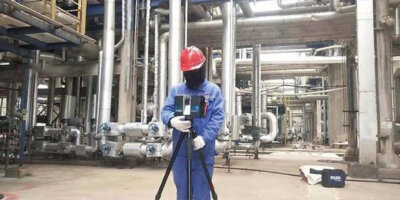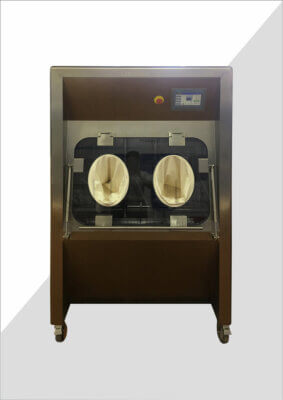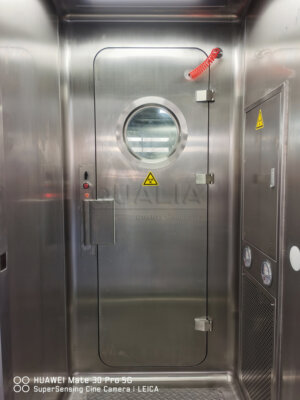In the realm of scientific research and medical diagnostics, certain laboratories handle dangerous pathogens and biological materials that pose significant risks to public health and the environment. These high-containment facilities, particularly those classified as Biosafety Level 3 (BSL-3) and Biosafety Level 4 (BSL-4), are required by law to implement robust safety measures. One crucial component of these safety protocols is the effluent decontamination system (EDS), which ensures that potentially hazardous liquid waste is thoroughly treated before being released into the environment.
Effluent decontamination systems play a vital role in maintaining biosafety standards and preventing the accidental release of dangerous microorganisms. These systems use various methods, including thermal and chemical treatments, to neutralize or destroy harmful pathogens present in laboratory wastewater. The implementation of an EDS is not just a regulatory requirement but a critical safeguard for public health and environmental protection.
As we delve deeper into the world of effluent decontamination, we'll explore the specific laboratories that require these systems, the different types of EDS available, and the stringent regulations governing their use. We'll also examine the operational aspects, maintenance requirements, and the latest advancements in effluent decontamination technology.
Biosafety Level 3 and 4 laboratories must have an effluent decontamination system to safely process liquid waste containing potentially hazardous biological agents before environmental release.
| Biosafety Level | Effluent Decontamination System Required | Typical Pathogens Handled |
|---|---|---|
| BSL-1 | No | Non-pathogenic agents |
| BSL-2 | Optional (risk-dependent) | Moderate-risk agents |
| BSL-3 | Yes | Serious or lethal agents |
| BSL-4 | Yes | Life-threatening agents |
Which laboratories are mandated to have effluent decontamination systems?
Laboratories dealing with high-risk biological agents are required to implement effluent decontamination systems as part of their safety protocols. This requirement primarily applies to facilities classified as Biosafety Level 3 (BSL-3) and Biosafety Level 4 (BSL-4), where research on dangerous pathogens is conducted.
BSL-3 and BSL-4 laboratories handle microorganisms that can cause severe to fatal diseases in humans, and for which treatments or vaccines may not be readily available. These facilities work with agents such as tuberculosis, West Nile virus, yellow fever virus, and even more dangerous pathogens like Ebola virus in BSL-4 settings.
Given the potential for these organisms to cause widespread harm if released into the environment, stringent containment measures are essential. The '(QUALIA)[qualia-bio.com]' effluent decontamination system is designed to meet these critical safety requirements, ensuring that all liquid waste from these high-risk laboratories is thoroughly treated before disposal.
Effluent decontamination systems are mandatory for BSL-3 and BSL-4 laboratories to prevent the accidental release of dangerous pathogens into the environment through liquid waste streams.
| Laboratory Type | EDS Requirement | Examples of Pathogens Handled |
|---|---|---|
| BSL-3 | Mandatory | Tuberculosis, West Nile virus |
| BSL-4 | Mandatory | Ebola virus, Marburg virus |
What are the primary methods of effluent decontamination?
Effluent decontamination systems employ various methods to neutralize or destroy potentially harmful microorganisms in laboratory wastewater. The two primary approaches are thermal treatment and chemical treatment, each with its own advantages and applications.
Thermal treatment involves heating the effluent to temperatures high enough to kill or inactivate pathogens. This method is highly effective against a wide range of microorganisms and does not introduce additional chemicals into the waste stream. Thermal systems typically operate at temperatures between 121°C and 134°C, maintained for specific periods to ensure complete sterilization.
Chemical treatment, on the other hand, uses disinfectants such as chlorine, peracetic acid, or hydrogen peroxide to decontaminate the effluent. This method can be effective at lower temperatures but requires careful management of chemical concentrations and contact times to achieve proper decontamination.
Thermal treatment in effluent decontamination systems typically operates at temperatures between 121°C and 134°C, maintained for specific periods to ensure complete sterilization of liquid waste.
| Decontamination Method | Temperature Range | Advantages | Disadvantages |
|---|---|---|---|
| Thermal Treatment | 121°C – 134°C | No chemical residues | High energy consumption |
| Chemical Treatment | Ambient – 60°C | Lower energy requirements | Chemical handling and storage |
How do batch and continuous flow systems differ in effluent decontamination?
Effluent decontamination systems can be categorized into two main types based on their operational flow: batch systems and continuous flow systems. Each type has its own set of characteristics that make it suitable for different laboratory settings and waste volumes.
Batch systems process effluent in discrete volumes, treating a specific amount of waste at a time. These systems are ideal for laboratories with lower waste volumes or intermittent waste generation. In a batch system, the effluent is collected in a holding tank, treated to the required parameters, and then released. This allows for precise control over the treatment process and is particularly useful when dealing with varying types of waste that may require different treatment protocols.
Continuous flow systems, as the name suggests, treat effluent in a constant stream. These systems are more suitable for facilities with high volumes of waste or continuous waste generation. Continuous flow systems can handle larger capacities and provide a more consistent treatment process, making them efficient for large-scale operations.
Batch effluent decontamination systems are ideal for laboratories with lower waste volumes or intermittent waste generation, allowing for precise control over the treatment process for each discrete volume of effluent.
| System Type | Waste Volume Handled | Advantages | Best Suited For |
|---|---|---|---|
| Batch | Low to Medium | Precise control, Flexible | Small to medium labs |
| Continuous Flow | Medium to High | Consistent process, High capacity | Large facilities, hospitals |
What are the key components of an effective effluent decontamination system?
An effective effluent decontamination system comprises several critical components, each playing a vital role in ensuring the safe treatment of laboratory wastewater. Understanding these components is essential for laboratory managers and biosafety officers to maintain and operate the system efficiently.
The primary components typically include a collection tank for gathering the effluent, a treatment chamber where the actual decontamination occurs, pumps for moving the liquid through the system, and controls for monitoring and adjusting the treatment parameters. Additionally, many systems incorporate filtration units, such as HEPA filters, to remove any remaining particulates or aerosols.
For thermal systems, heat exchangers and steam generators are crucial components that bring the effluent to the required sterilization temperature. Chemical systems, on the other hand, require chemical storage tanks, dosing pumps, and mixing chambers to ensure proper disinfection.
HEPA filtration units are often incorporated into effluent decontamination systems to remove any remaining particulates or aerosols, providing an additional layer of safety before the treated effluent is released.
| Component | Function | Importance |
|---|---|---|
| Collection Tank | Gathers untreated effluent | Ensures proper volume for treatment |
| Treatment Chamber | Site of decontamination process | Core component for pathogen inactivation |
| Control System | Monitors and adjusts treatment parameters | Ensures consistent and effective treatment |
| HEPA Filtration | Removes particulates and aerosols | Provides final safety barrier |
How often should effluent decontamination systems be verified and maintained?
Regular verification and maintenance of effluent decontamination systems are crucial to ensure their continued effectiveness and compliance with biosafety regulations. The frequency and extent of these procedures depend on various factors, including the type of system, the volume of waste processed, and the specific pathogens handled in the laboratory.
Annual verification is typically the minimum requirement for most EDS installations. This comprehensive check involves testing all operational components, validating the biological efficacy of the system, and certifying associated equipment such as HEPA filters. However, more frequent checks may be necessary for high-use systems or those handling particularly dangerous pathogens.
Routine maintenance should be performed on a more regular basis, often monthly or quarterly. This includes checking for leaks, ensuring proper chemical levels in chemical-based systems, and verifying the accuracy of temperature and pressure gauges in thermal systems.
Annual verification of effluent decontamination systems is typically the minimum requirement, involving comprehensive testing of all operational components and biological validation of the system's efficacy.
| Maintenance Task | Frequency | Purpose |
|---|---|---|
| Operational Check | Weekly | Ensure basic functionality |
| Chemical Level Check | Monthly | Maintain proper disinfectant concentrations |
| Biological Validation | Annually | Verify efficacy against target organisms |
| HEPA Filter Certification | Annually | Ensure proper filtration of treated effluent |
What regulations govern the use of effluent decontamination systems?
The use of effluent decontamination systems is subject to a complex web of regulations and guidelines set forth by various national and international bodies. These regulations are designed to ensure that laboratories handling dangerous pathogens maintain the highest standards of biosafety and environmental protection.
In the United States, the Centers for Disease Control and Prevention (CDC) and the National Institutes of Health (NIH) provide comprehensive guidelines for biosafety practices, including the management of laboratory effluent. The Biosafety in Microbiological and Biomedical Laboratories (BMBL) manual is a key resource that outlines the requirements for different biosafety levels, including the need for effluent decontamination in BSL-3 and BSL-4 facilities.
Internationally, the World Health Organization (WHO) offers guidance through its Laboratory Biosafety Manual, which provides global standards for biosafety practices, including waste management and decontamination procedures.
The Biosafety in Microbiological and Biomedical Laboratories (BMBL) manual, published by the CDC and NIH, is a key resource outlining the requirements for effluent decontamination in BSL-3 and BSL-4 facilities in the United States.
| Regulatory Body | Document | Scope |
|---|---|---|
| CDC/NIH | BMBL Manual | U.S. Biosafety Guidelines |
| WHO | Laboratory Biosafety Manual | Global Biosafety Standards |
| EPA | Resource Conservation and Recovery Act (RCRA) | U.S. Hazardous Waste Management |
What are the latest advancements in effluent decontamination technology?
The field of effluent decontamination is continuously evolving, with new technologies and improvements being developed to enhance safety, efficiency, and environmental sustainability. These advancements are crucial in keeping pace with the increasing complexity of biological research and the emergence of new pathogens.
One significant area of advancement is in the development of more energy-efficient thermal treatment systems. These new systems utilize innovative heat recovery mechanisms to reduce energy consumption while maintaining effective sterilization temperatures. Additionally, there's a growing interest in combining thermal and chemical treatments to create hybrid systems that offer the benefits of both methods.
Another area of innovation is in the realm of real-time monitoring and control systems. Advanced sensors and automated controls allow for more precise management of the decontamination process, ensuring consistent results and providing detailed documentation for regulatory compliance.
Advanced real-time monitoring and control systems in effluent decontamination allow for more precise management of the treatment process, ensuring consistent results and providing detailed documentation for regulatory compliance.
| Technology Advancement | Benefit | Application |
|---|---|---|
| Energy-efficient Thermal | Reduced operating costs | High-volume waste treatment |
| Hybrid Treatment Systems | Combines benefits of thermal and chemical | Versatile waste stream handling |
| Real-time Monitoring | Improved process control and documentation | Enhanced regulatory compliance |
In conclusion, effluent decontamination systems are an indispensable component of high-containment laboratories, particularly those classified as BSL-3 and BSL-4. These systems serve as the last line of defense against the accidental release of dangerous pathogens into the environment through liquid waste streams. From thermal and chemical treatment methods to the distinction between batch and continuous flow systems, the field of effluent decontamination is rich with technological solutions designed to meet the stringent safety requirements of modern biomedical research.
The importance of regular maintenance, verification, and compliance with regulatory standards cannot be overstated. As research into infectious diseases continues to advance, so too must the technologies and protocols that ensure the safety of laboratory personnel and the general public. The latest advancements in effluent decontamination technology, such as energy-efficient systems and real-time monitoring capabilities, demonstrate the ongoing commitment to improving biosafety practices.
Ultimately, the implementation and proper management of effluent decontamination systems are crucial for maintaining the delicate balance between scientific progress and public safety. As we continue to push the boundaries of biomedical research, these systems will remain at the forefront of our efforts to contain and control potentially hazardous biological agents, safeguarding both human health and the environment.
External Resources
Effluent Decontamination System – Treatment of Bio Contaminants – This resource provides detailed information on the methods of decontamination, including thermal and chemical treatments, and various components of effluent decontamination systems.
Effluent Decontamination Systems (EDS): Annual Verification and General Maintenance – This CDC document offers guidelines on the annual verification and maintenance of effluent decontamination systems, including operational component verification and biological validation.
Effluent Decontamination Systems | Biowaste Sterilization | PRI BIO – This resource discusses various types of effluent decontamination systems and emphasizes the importance of understanding waste effluent characteristics for different bio-safety levels.
Effluent Decontamination systems – Belgian Biosafety Server – This document details the operation of effluent decontamination systems in high containment facilities, covering temperature ranges, exposure times, and system types.
Registration and Inspection of an Effluent Decontamination System – This CDC policy statement outlines the regulations and requirements for the registration and inspection of effluent decontamination systems, particularly for select agents and toxins.
Biosafety in Microbiological and Biomedical Laboratories (BMBL) – CDC – This comprehensive resource provides guidelines on biosafety practices, including waste management in various biosafety level laboratories.
- WHO Laboratory Biosafety Manual – The World Health Organization's manual provides global standards and guidelines for laboratory biosafety, including the management and decontamination of biohazardous waste.
Related Contents:
- Effluent Decontamination Systems for Biosafety Laboratories
- Effluent Decontamination Systems: Safeguarding Malaysia’s Environment
- Continuous Effluent Decontamination: Protecting Our Environment
- Effluent Decontamination: Safeguarding Our Environment
- Decontamination Systems: Safeguarding Health and Environment
- Water Decontamination: Essential Methods for Clean, Safe Water
- Decontamination Cleaning: Ensuring Safety Through Thorough Sanitization
- Maintaining a Clean Effluent Filter: Essential Steps
- Application of Biological Treatment Methods for Different Types of Wastewaters






























